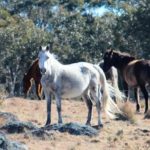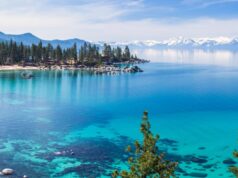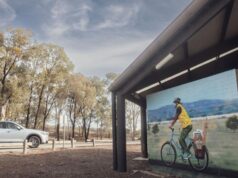Published in The Australian newspaper, Nov 2018
Photo: Getty
Thousands of feral horses across the Australian Alps are rapidly destroying fragile, alpine ecosystems, threatening water catchments and bringing critically endangered species to the brink of extinction, according to 21 peer-reviewed papers presented to the Australian Academy of Science in Canberra on Thursday.
Over fifty scientists will sign the Kosciuszko Science Accord, which calls on the NSW government to repeal the Wild Horse Heritage Act 2018 and acknowledge the “extensive, serious and potentially irreparable damage being done to Kosciuszko National Park by feral horses”. The conference is the largest show of strength from the scientific community since the bill became law in June.
The controversial legislation, known as the “Brumby Bill,” was introduced by National Party deputy premier and member for Monaro, John Barilaro. Its purpose is to, “Recognise the heritage value of sustainable wild horse populations within parts of Kosciuszko National Park and to protect that heritage.” It transfers management decisions on feral horses from NSW National Parks and Wildlife Service to a yet to be appointed Community Advisor Panel. Scientists estimate there are more than 6000 feral horses in the park, with recent photographs taken along the Snowy River showing some horses starving to death.
Conference spokesperson, Dr Jamie Pittock, from ANU College of Medicine, Biology and Environment, says feral horse damage is so bad it can be mapped from space. “It’s spreading and it’s getting worse. The damage is particularly focused around headwaters of major rivers that supply water for three million Australians.”
Dr Pittock wants aerial culling put back on the table as a management option. There has been no aerial culling of feral horses in NSW since 2000.
“Aerial culling is the only control method we have available that is humane and that will reduce the number. The current practice of trapping horses live is incapable of reducing horse numbers. They’re simply not trapping enough horses. Rehoming is a nonsense. Only 18 per cent of the modest numbers that are being trapped are being rehomed.”
Mr Barilaro says once a new management plan is established horses will be trapped and removed, with an emphasis on rehoming. While Mr Barilaro has previously said lethal culling would not occur he now concedes some horses will ultimately be slaughtered.
“Some of these horses will end up in abattoirs, there’s no doubt. Horses will still be destroyed but they won’t be shot and left to rot on the forest floor, they will go to an abattoir.”
He says the public will never support the shooting of horses. Current cases of starving horses, according to Mr Barilaro, are due to the drought.
“For those who oppose the brumby bill to use it as some sort of political football, saying this is because of the bill is disgusting. Somehow the brumby bill has caused the drought according to these people.”
Alpine ecologist Dr Dick Williams told the conference the legislation makes a mockery of science, making horses a protected species and elevating a feral pest to a higher conservation status than native fauna.
“We are dealing with a known agent of destruction. We’ve got a management time bomb, with huge numbers and high reproductive rates. If left unchecked then management is a pipe dream.”
The findings of the peer-reviewed papers are unlikely to hold much sway with supporters of feral horses in the Monaro electorate, many of whom hold a deep distrust of scientists and the NSW National Parks and Wildlife Service. Resentment of the removal of cattle grazing from Kosciuszko National Park between 1947 and 1968 is a sore point for some voters, many of whom told The Australian they would like to see cattle grazing reintroduced to the national park. Mr Barilaro says he understands the frustrations of graziers but that reintroducing grazing would be, “a bridge too far.”



